“The Space Launch System, or SLS, is a Shuttle-Derived heavy launch vehicle being designed by NASA, following the cancellation of the Constellation Program, to replace the Space Shuttle after its retirement. The NASA Authorization Act of 2010 envisions the transformation of the Ares I and Ares V vehicle designs into a single launch vehicle usable for both crew and cargo. It is to be upgraded over time with more powerful versions. The proposed SLS is visually similar to the legacy Saturn V booster and in particular the proposed, two-stage, Saturn INT-20.
The Space Launch System is to be a Shuttle-Derived heavy launch vehicle. The initial capability of the core elements, without an upper stage, should be for between 70 tons and 100 tons into low-Earth orbit (LEO) in preparation for transit for missions beyond low-Earth orbit. With the addition of integrated upper Earth Departure Stage the total lift capability of the Space Launch System should be 130 tons or more.
Preliminary designs indicate that the current Space Shuttle Main Engines (RS-25) and Space Shuttle Solid Rocket Boosters would be utilized, and much of the External Tank design would remain the same. This design would require dramatically less development time than the Ares V heavy lift launch vehicle.
On May 24, 2011, NASA announced that development of the Orion from the Constellation program will continue under the name Multi-Purpose Crew Vehicle (MPCV). In September, 2011 NASA announced the SLS configuration. For early flights it has an 8.4-meter diameter core with three RS-25D/E engines, 8.4-meter upper stage with J-2X engine, and two ATK solid rocket boosters. Later versions will use five RS-25D/E engines and the boosters will be upgraded as well. Selection of the upgraded boosters will be by competitive bid.
On June 17, 2011, Aerojet announced a strategic partnership with Teledyne Brown to develop and produce a domestic version of the NK-33 engine, with its thrust increased to 500,000 pounds-force (2.2 MN) at sea level. This booster is to compete against Shuttle-derived solid rocket boosters for the SLS launch vehicle.
On September 14, 2011, NASA announced that it had selected the design of the new Space Launch System. NASA declared that it would take the agency's astronauts farther into space than ever before and provide the cornerstone for future human space exploration efforts by the US”. – Wikipedia
The Space Launch System is to be a Shuttle-Derived heavy launch vehicle. The initial capability of the core elements, without an upper stage, should be for between 70 tons and 100 tons into low-Earth orbit (LEO) in preparation for transit for missions beyond low-Earth orbit. With the addition of integrated upper Earth Departure Stage the total lift capability of the Space Launch System should be 130 tons or more.
Preliminary designs indicate that the current Space Shuttle Main Engines (RS-25) and Space Shuttle Solid Rocket Boosters would be utilized, and much of the External Tank design would remain the same. This design would require dramatically less development time than the Ares V heavy lift launch vehicle.
On May 24, 2011, NASA announced that development of the Orion from the Constellation program will continue under the name Multi-Purpose Crew Vehicle (MPCV). In September, 2011 NASA announced the SLS configuration. For early flights it has an 8.4-meter diameter core with three RS-25D/E engines, 8.4-meter upper stage with J-2X engine, and two ATK solid rocket boosters. Later versions will use five RS-25D/E engines and the boosters will be upgraded as well. Selection of the upgraded boosters will be by competitive bid.
On June 17, 2011, Aerojet announced a strategic partnership with Teledyne Brown to develop and produce a domestic version of the NK-33 engine, with its thrust increased to 500,000 pounds-force (2.2 MN) at sea level. This booster is to compete against Shuttle-derived solid rocket boosters for the SLS launch vehicle.
On September 14, 2011, NASA announced that it had selected the design of the new Space Launch System. NASA declared that it would take the agency's astronauts farther into space than ever before and provide the cornerstone for future human space exploration efforts by the US”. – Wikipedia
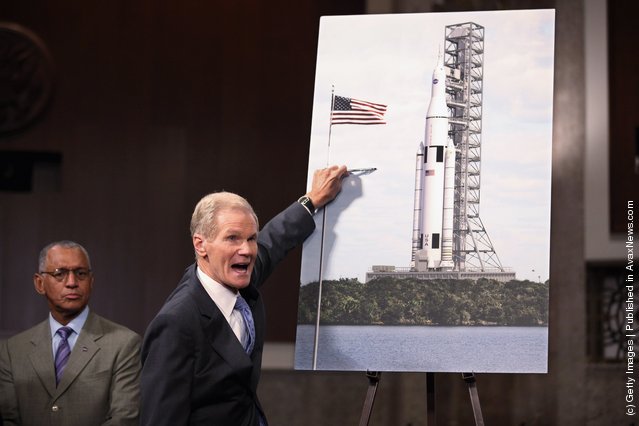
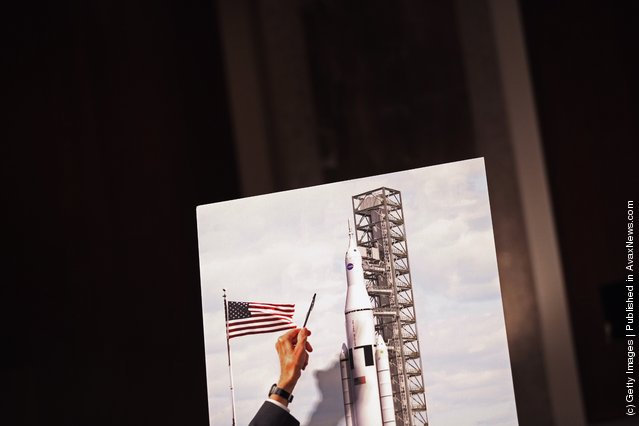
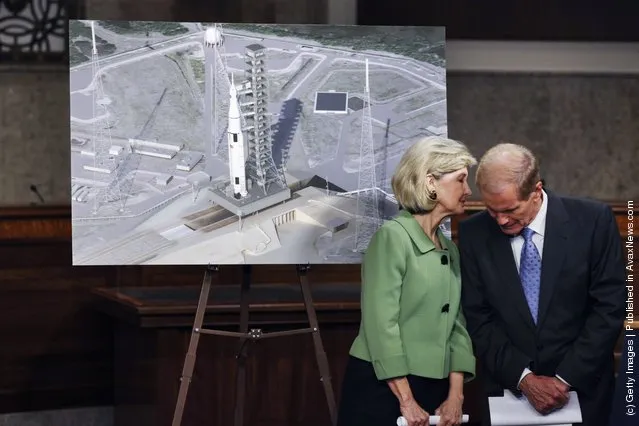
U.S. Sen. Kay Bailey Hutchison (R-TX) (L) and U.S. Sen. Ben Nelson (D-FL) speak during a news conference to introduce the design of the new Space Launch System on Capitol Hill September 14, 2011 in Washington, DC. In combination with a crew capsule already under development, the new heavy-lift rocket will use a liquid hydrogen and liquid oxygen fuel system and will be capapble of lifting 70-100 metric tons before evolving to a lift 130 metric tons. The estimated five-year price tag for the giant rocket is $10 billion, $6 billion for the capsule and $2 billion for the launch site at Kennedy Space Center in Florida, officials said. (Photo by Chip Somodevilla/Getty Images)
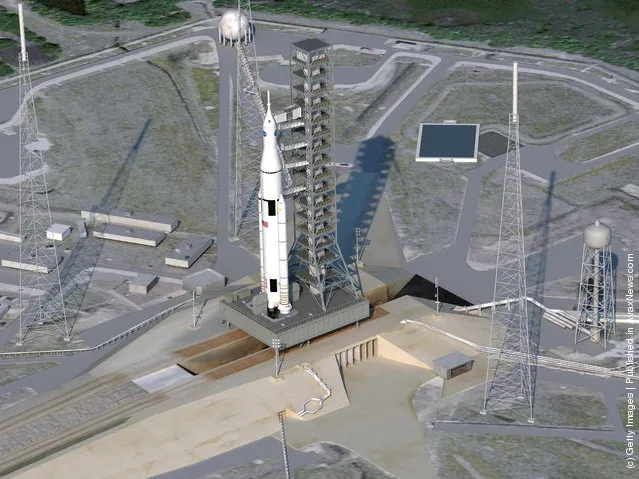
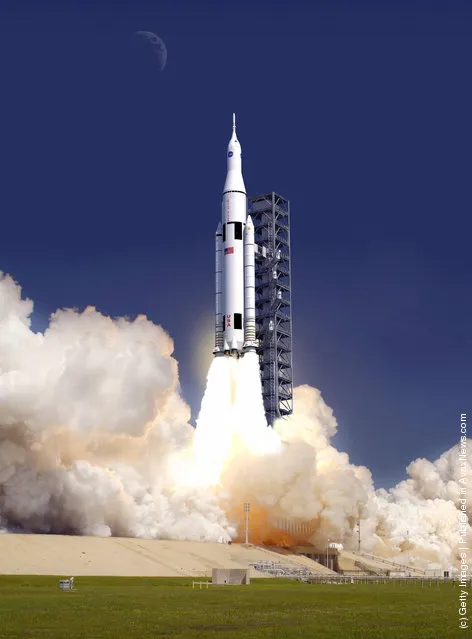
In this illustration provided by NASA, the design for a new space rocket system, the Space Launch System, is seen. NASA's new rocket design will reportedly cost about $35 billion and be ready to for test launch in 2017. According to NASA, the rocket will be used to carry Orion Multi-Purpose Crew Vehicle as well as cargo and science experiments to earth's orbit, as a backup for the space station and possibly destinations beyond that. (Illustration by NASA via Getty Images)
15 Sep 2011 10:50:00,
post received
0 comments
